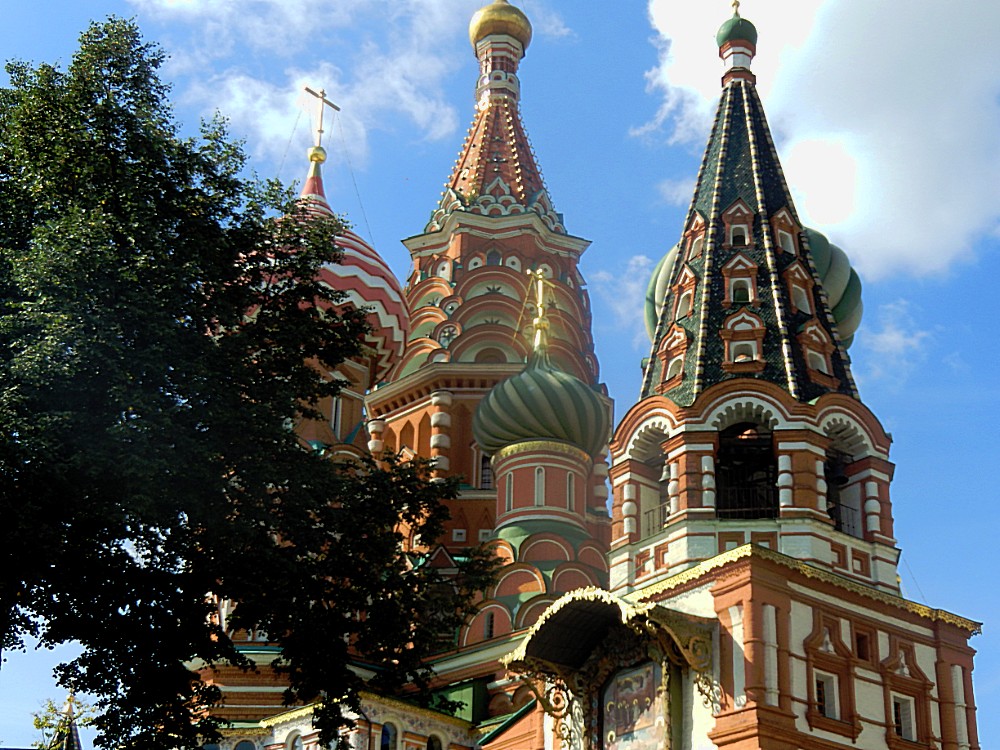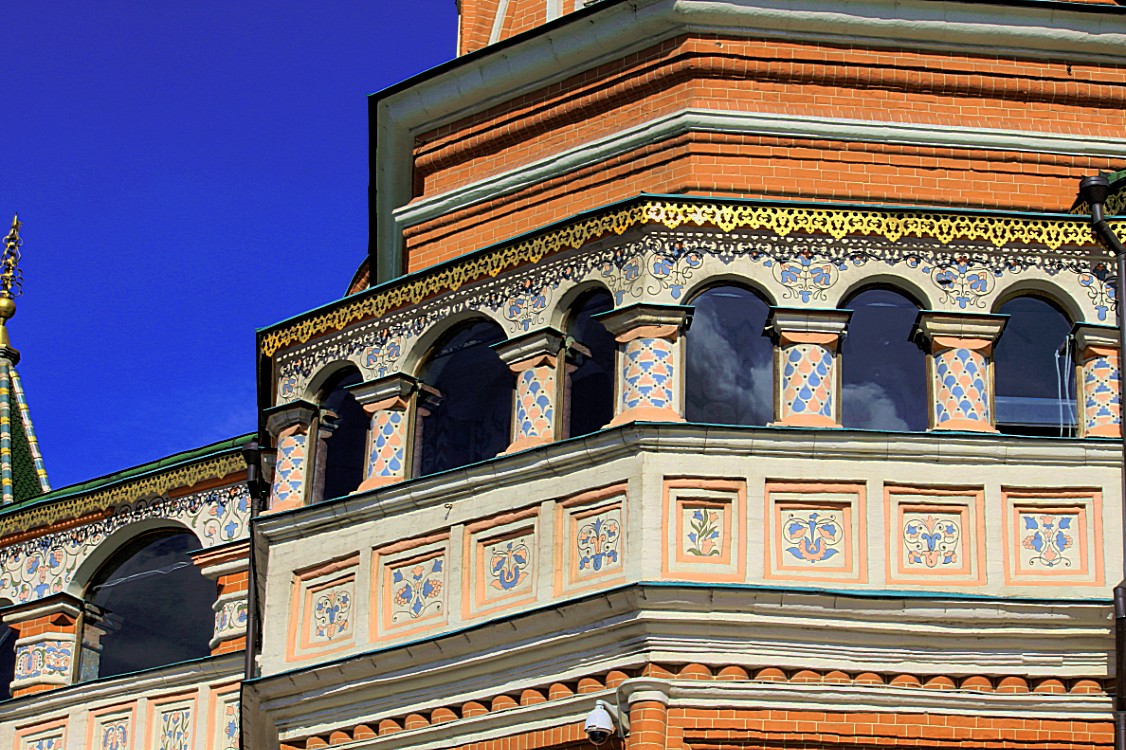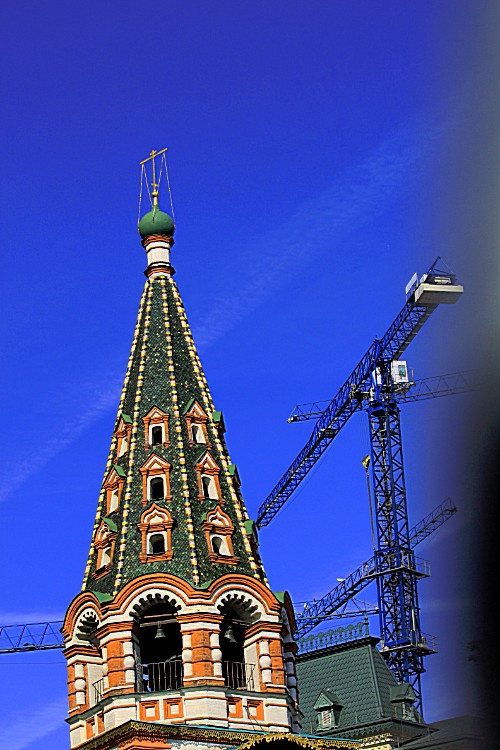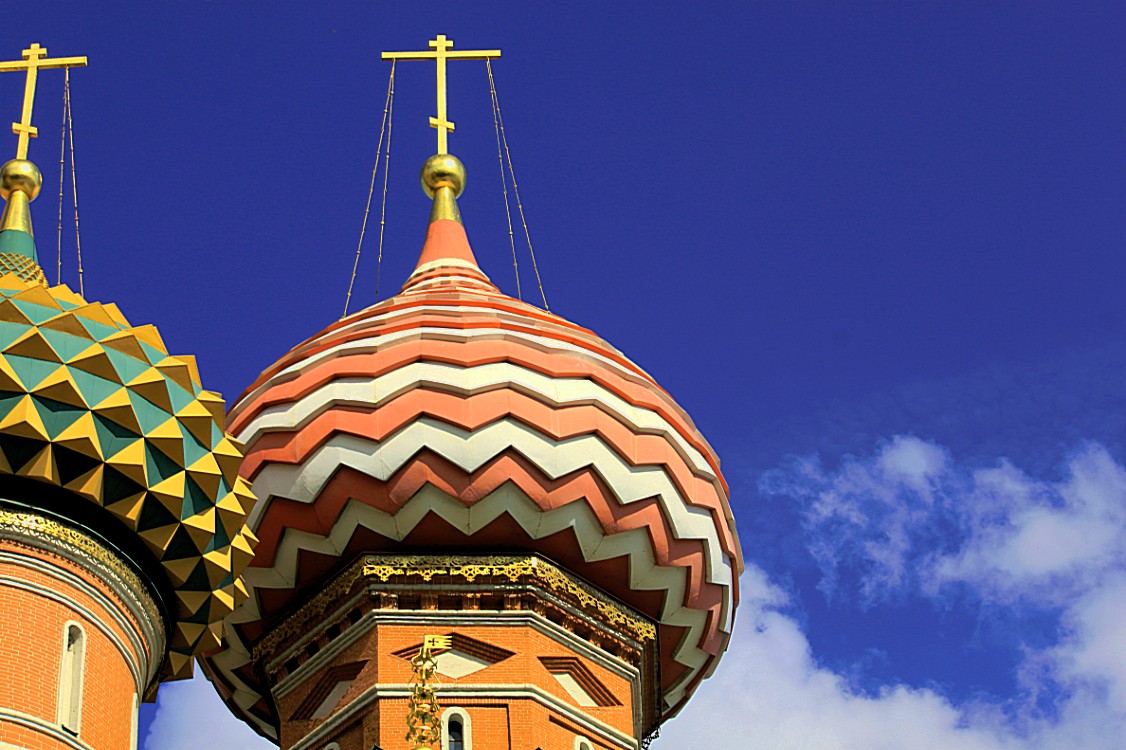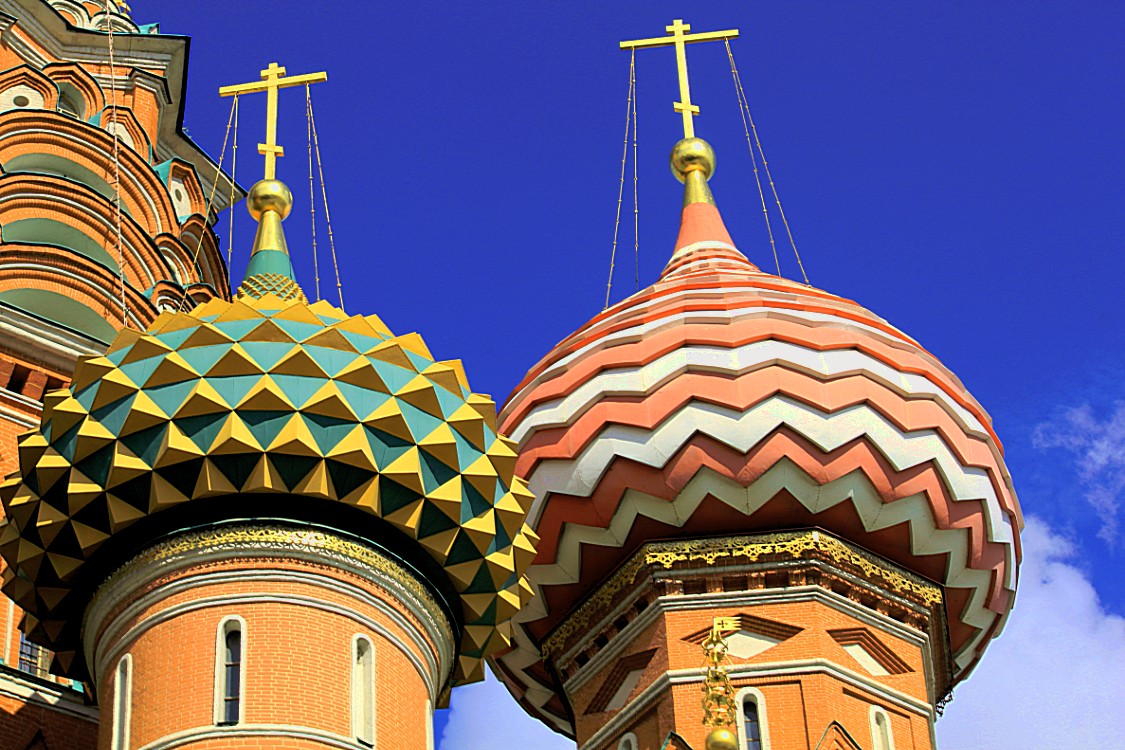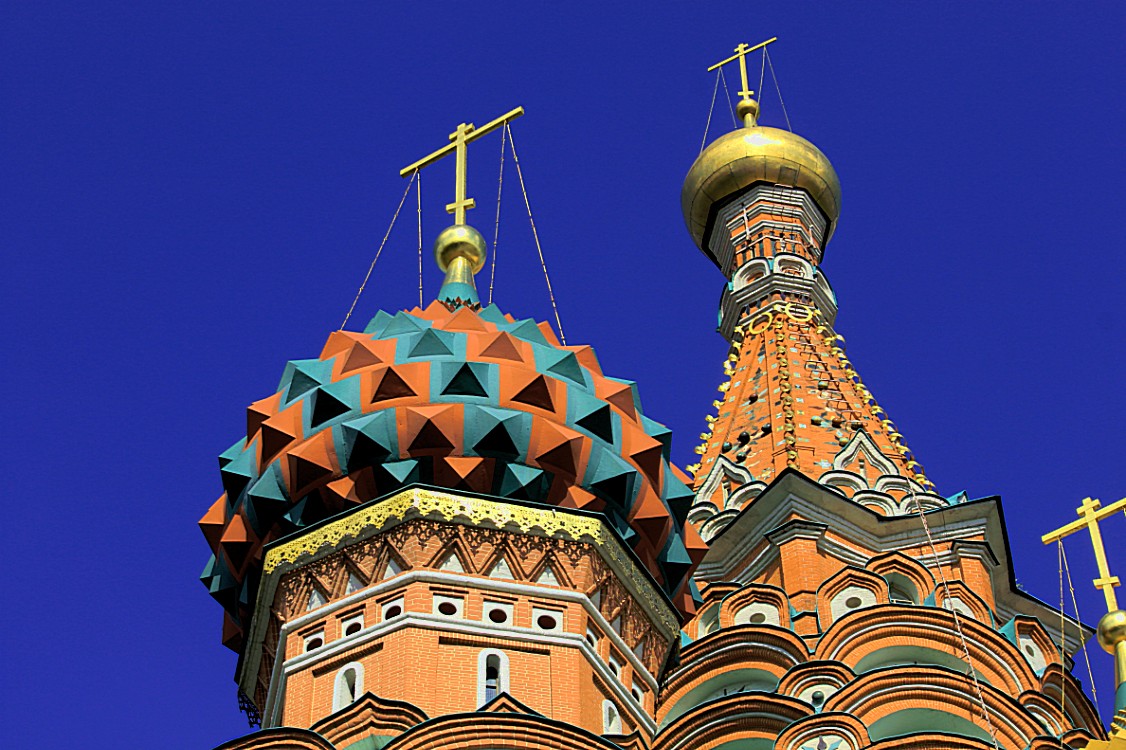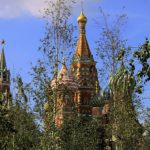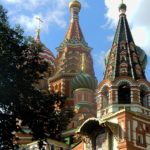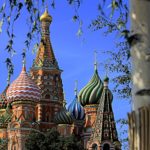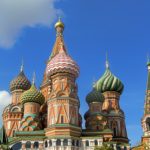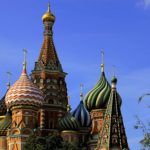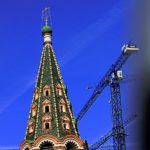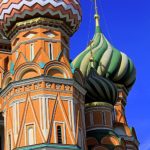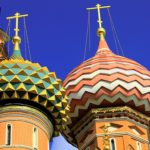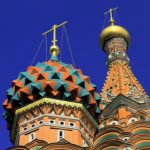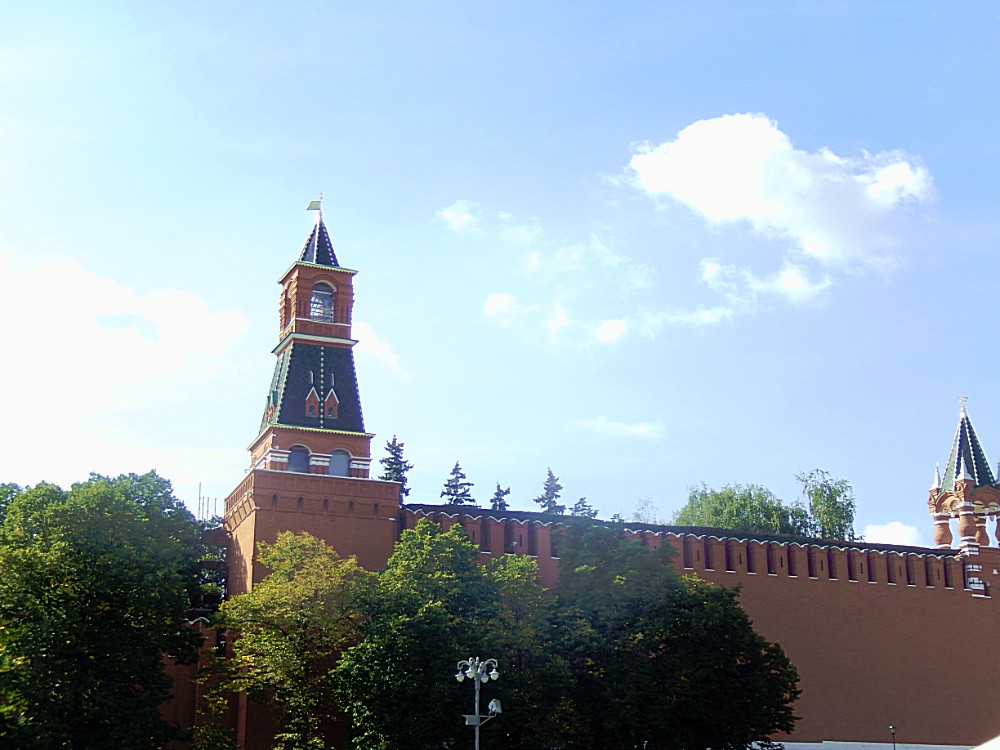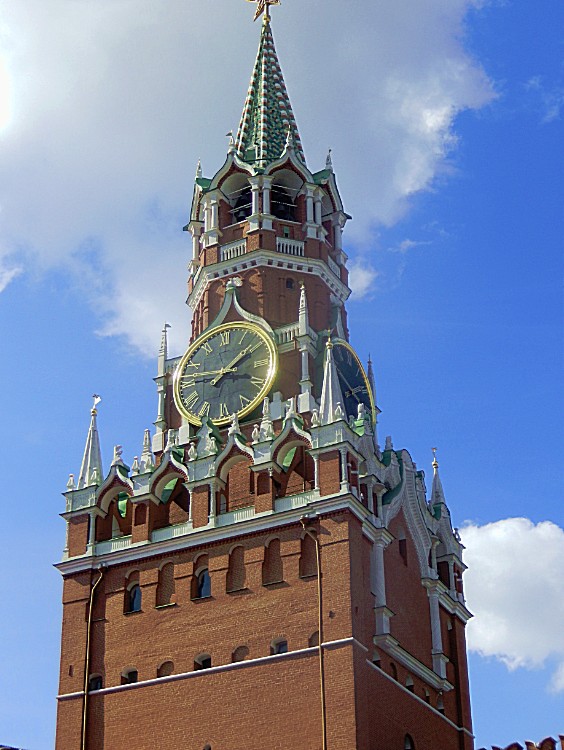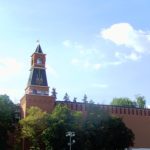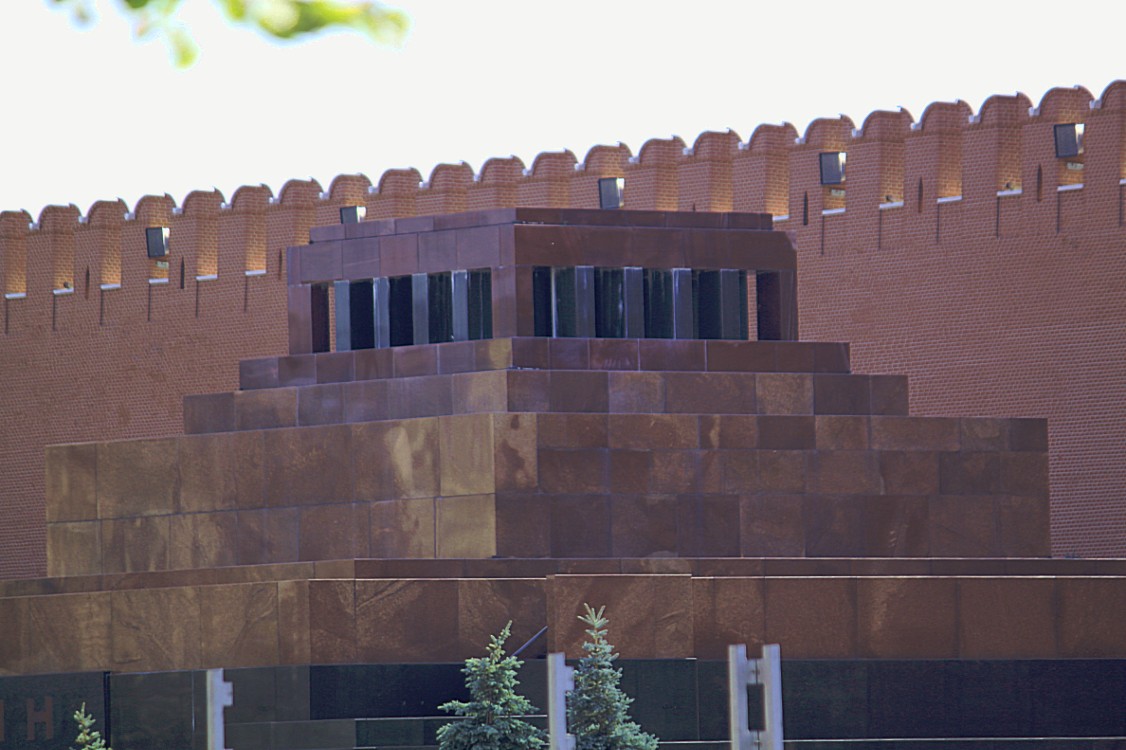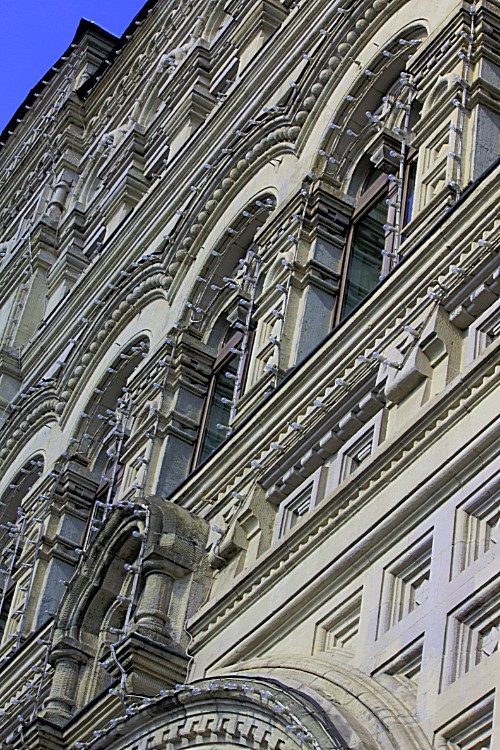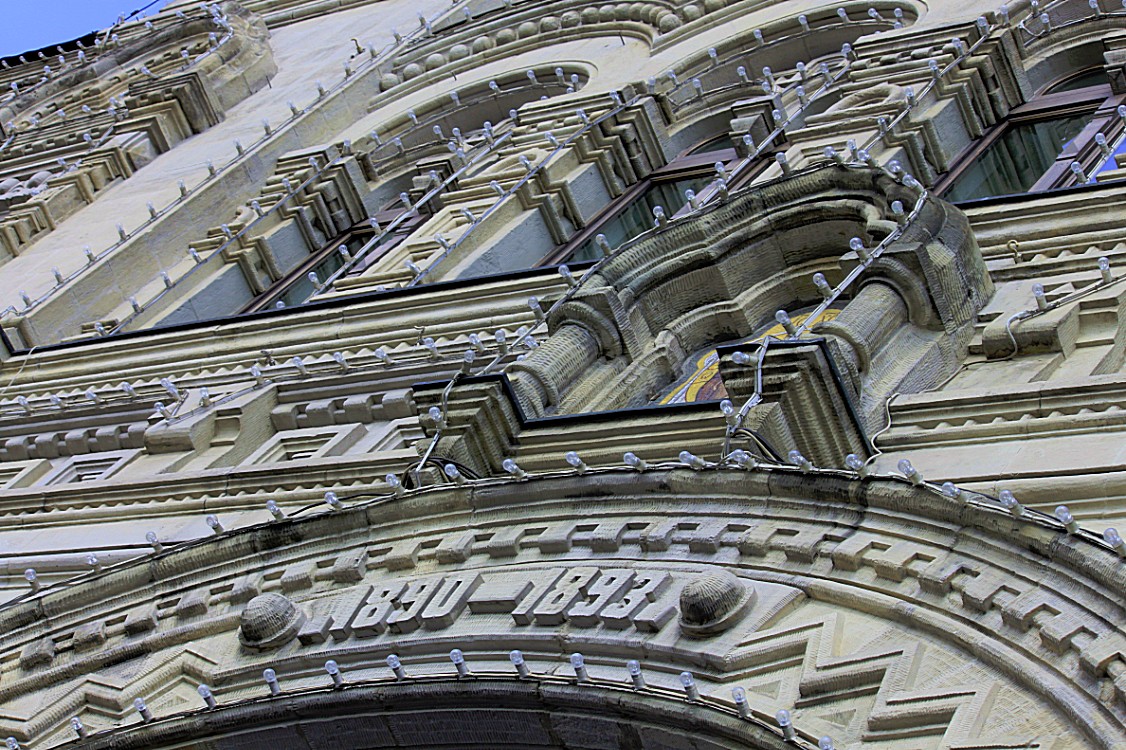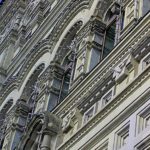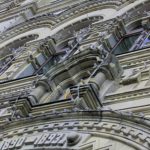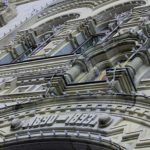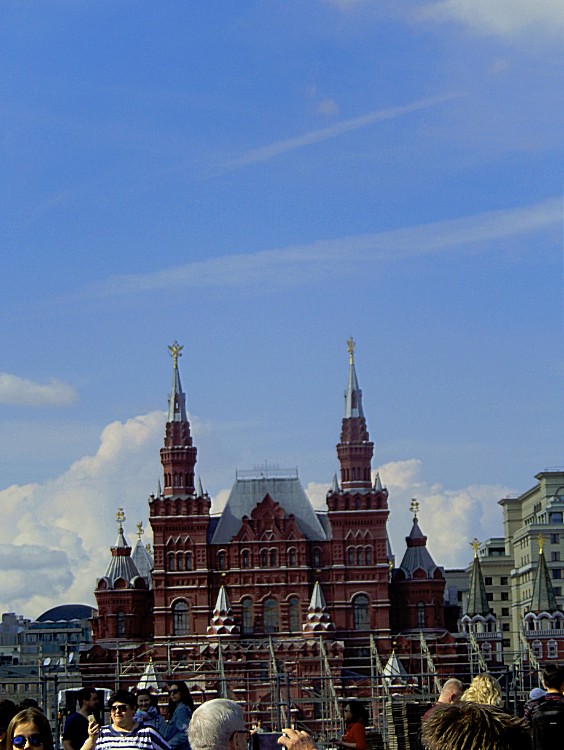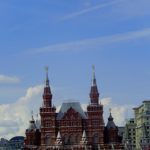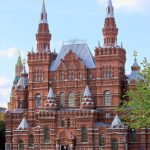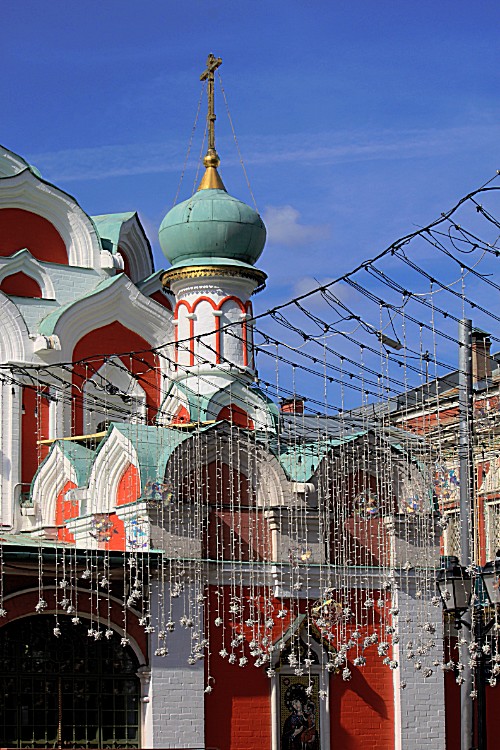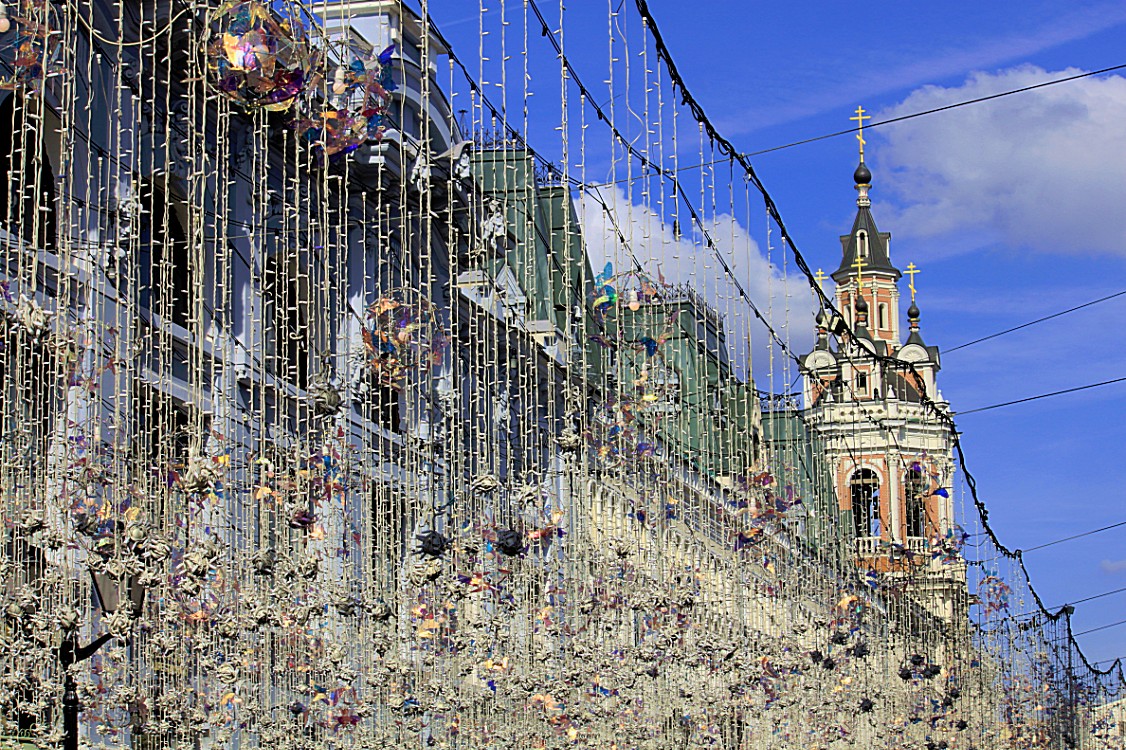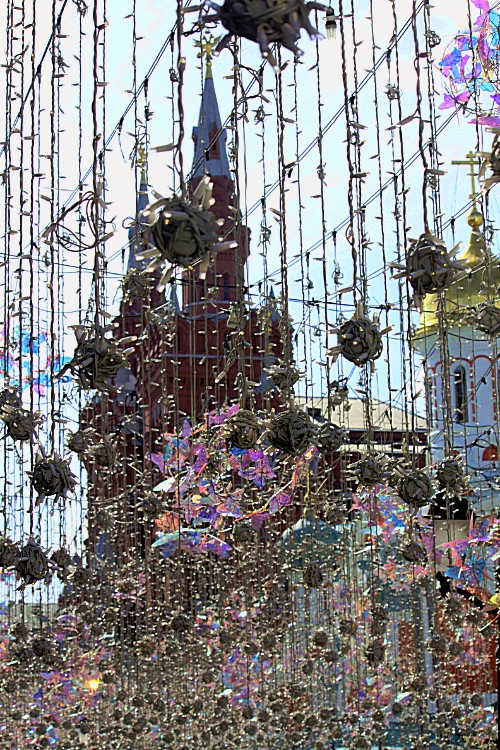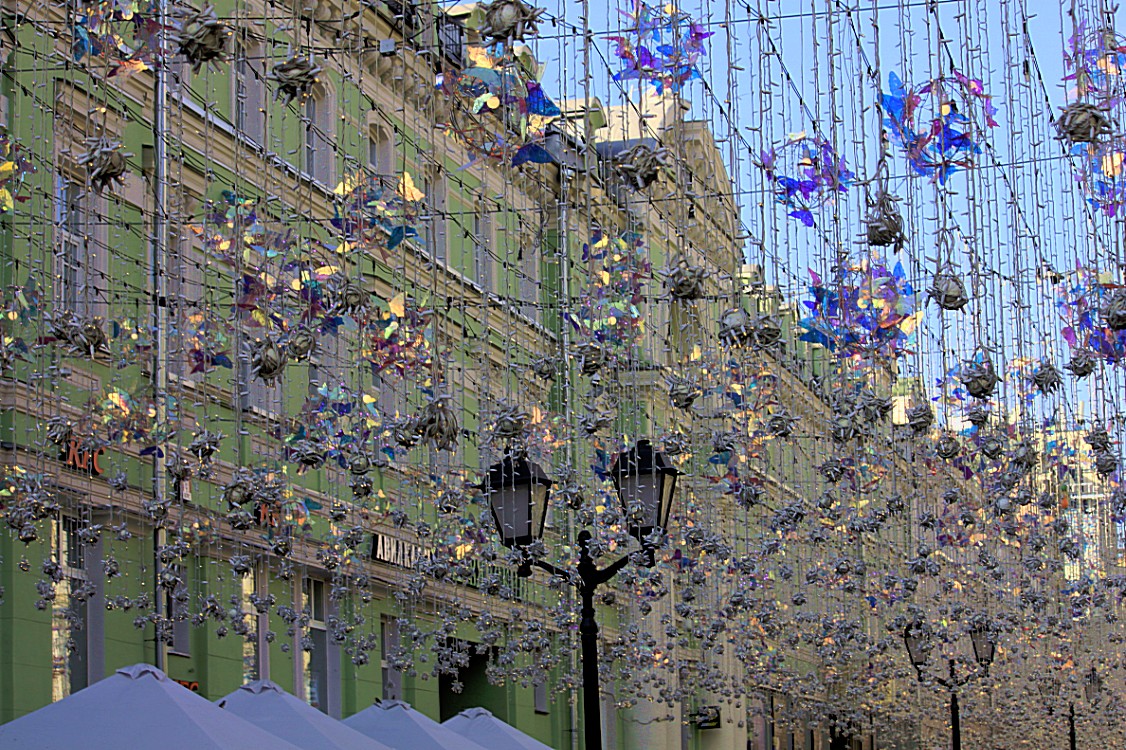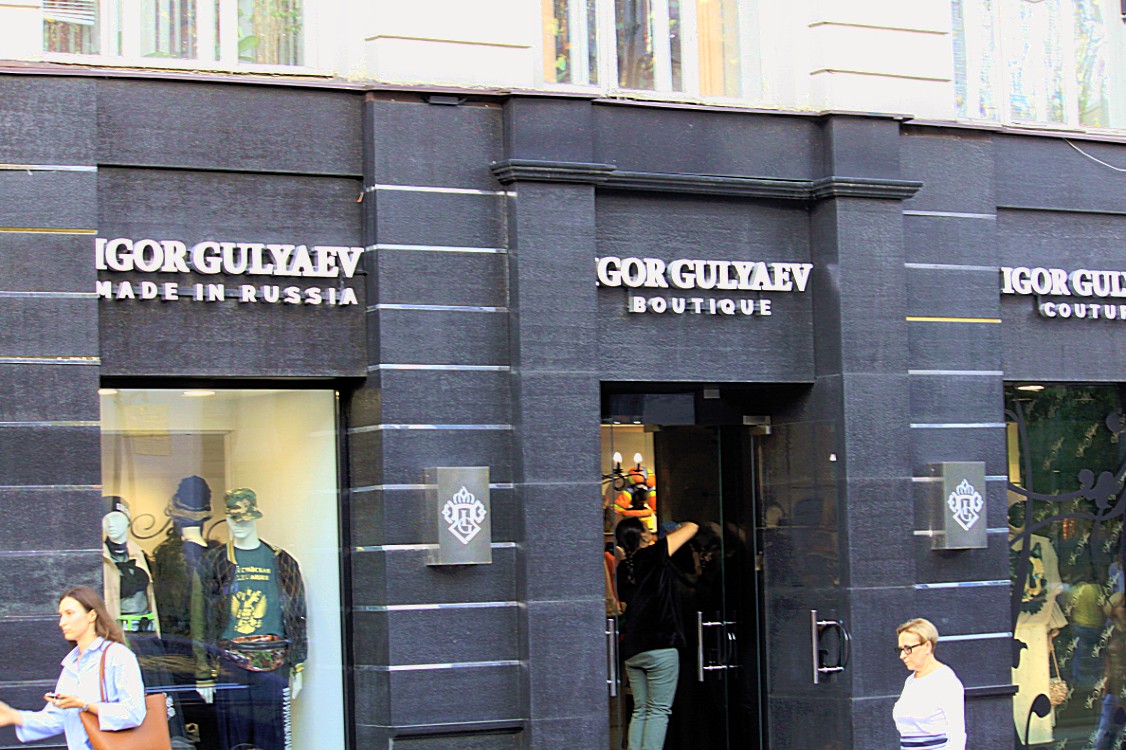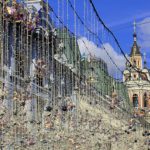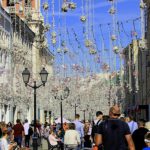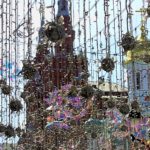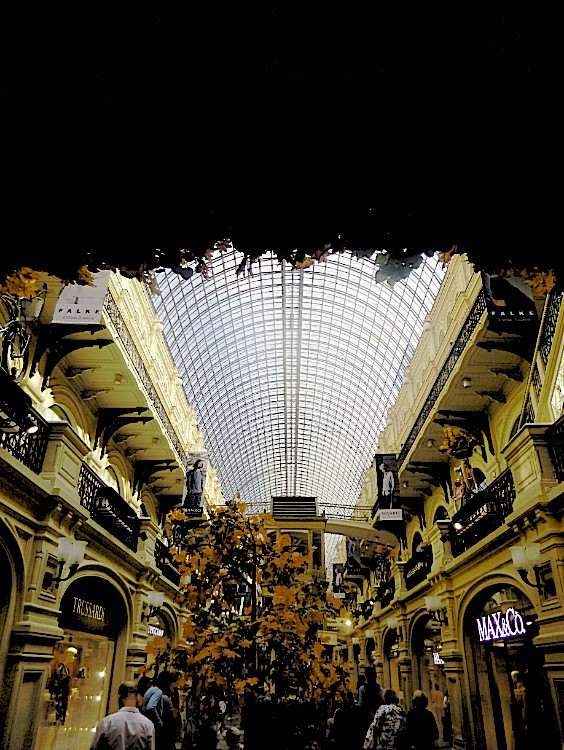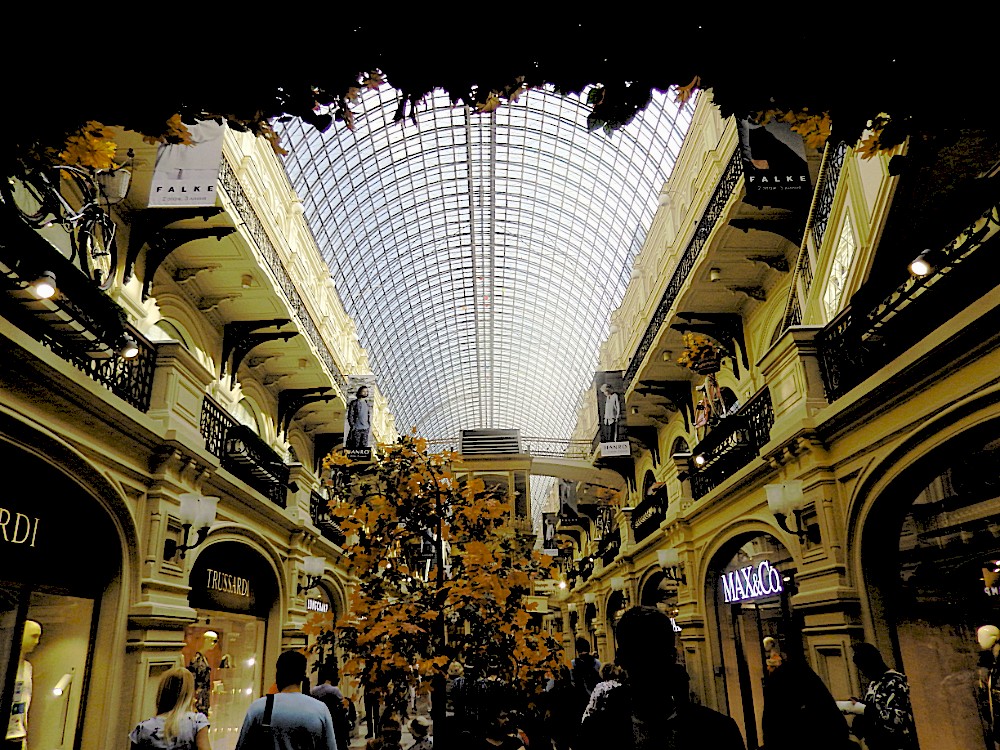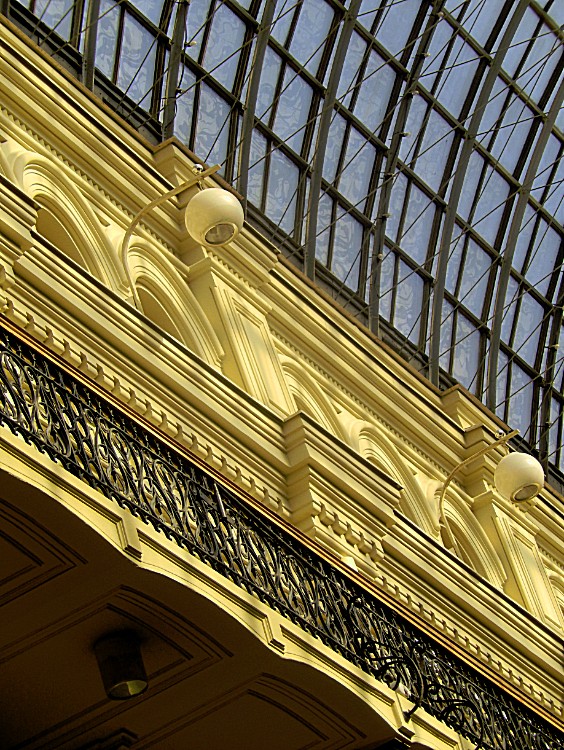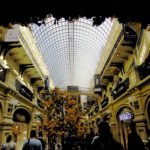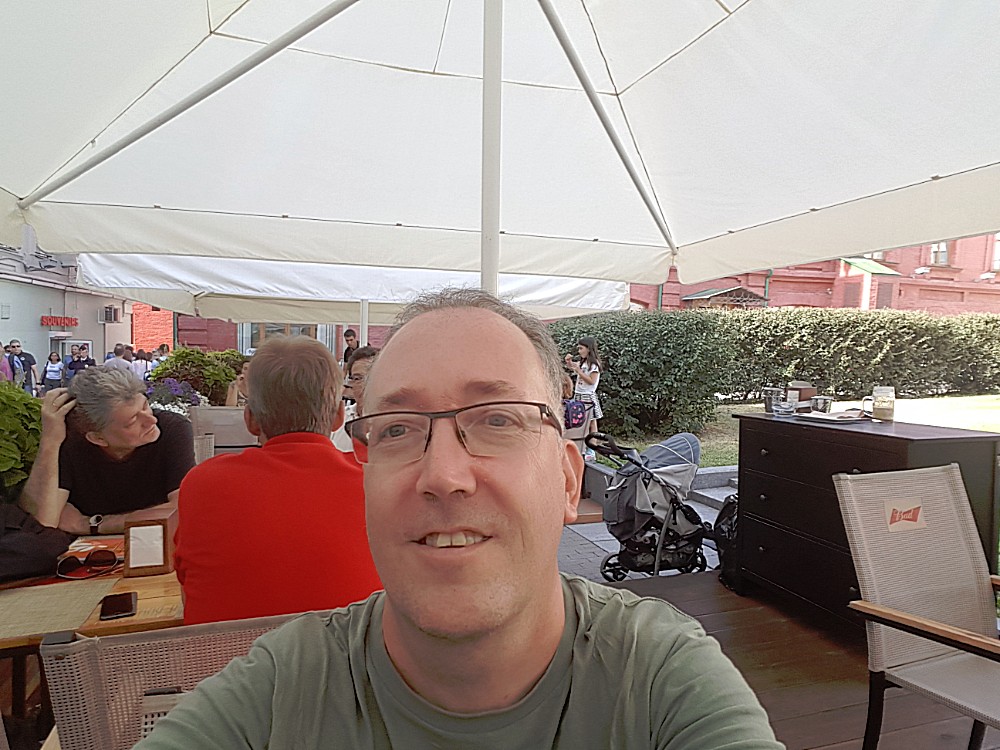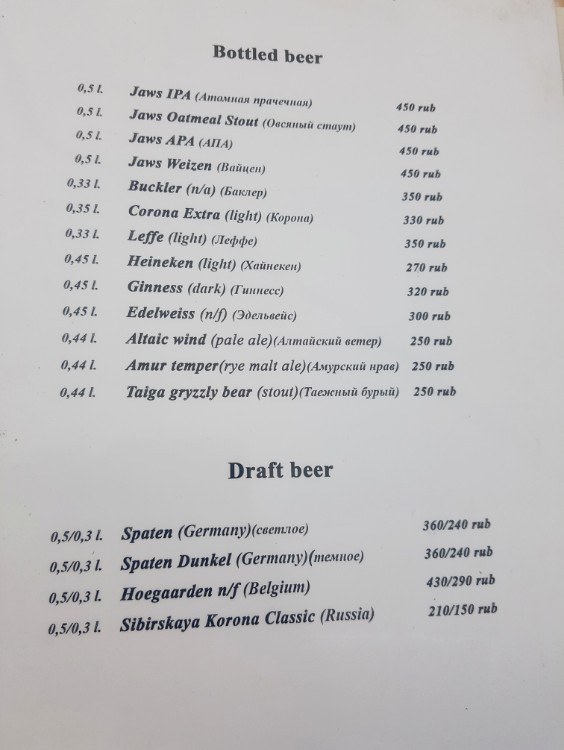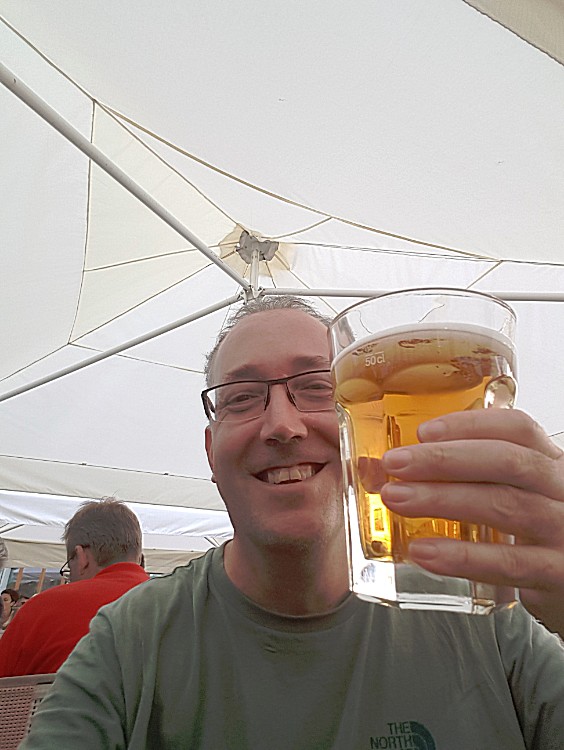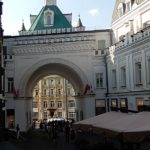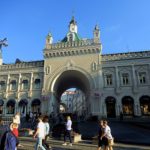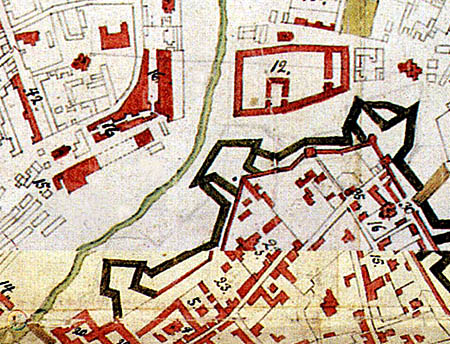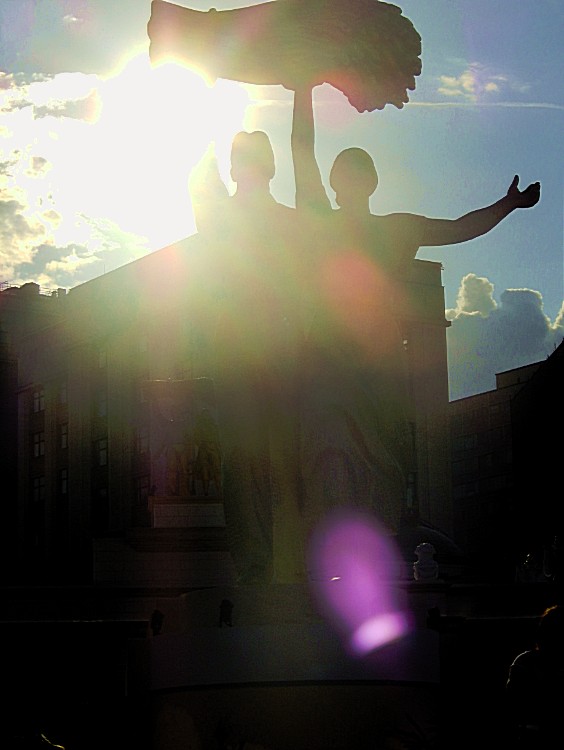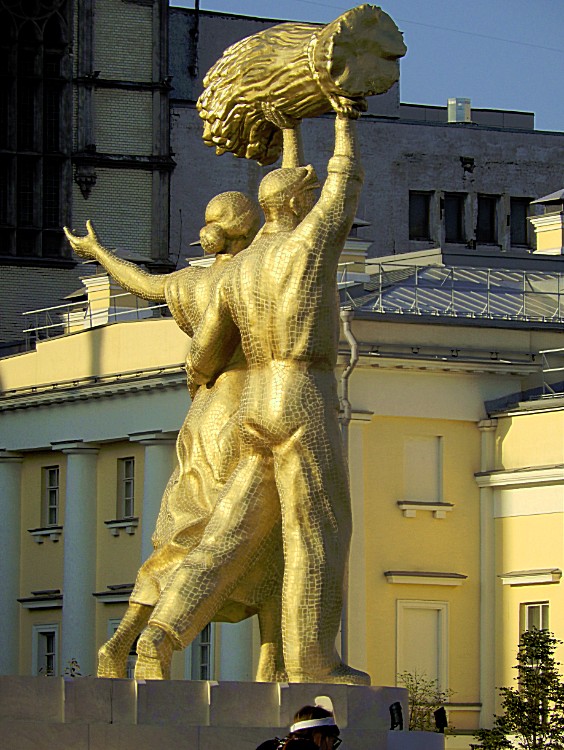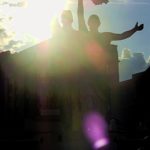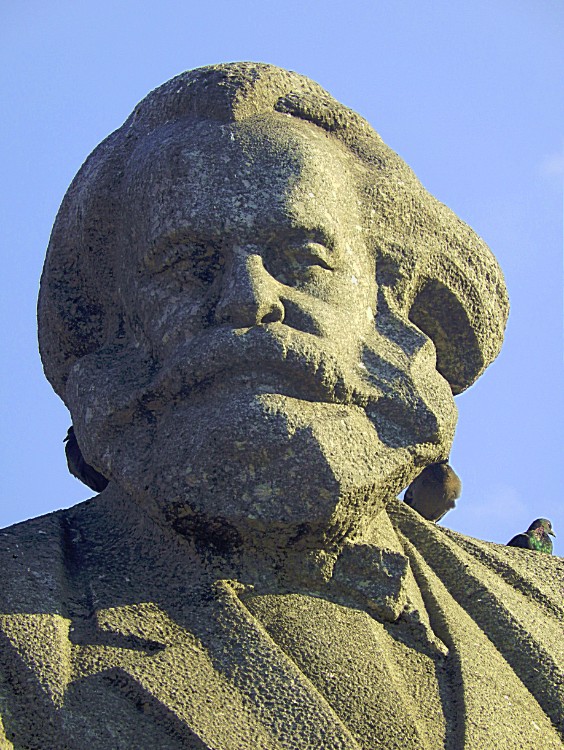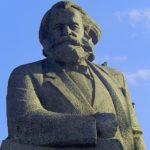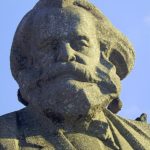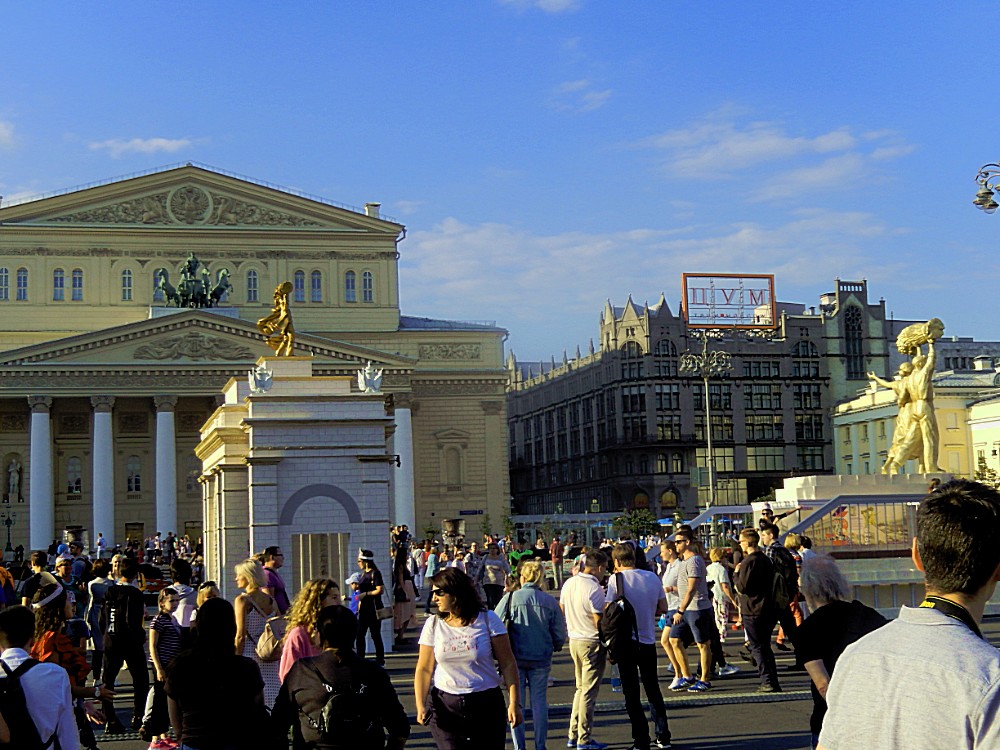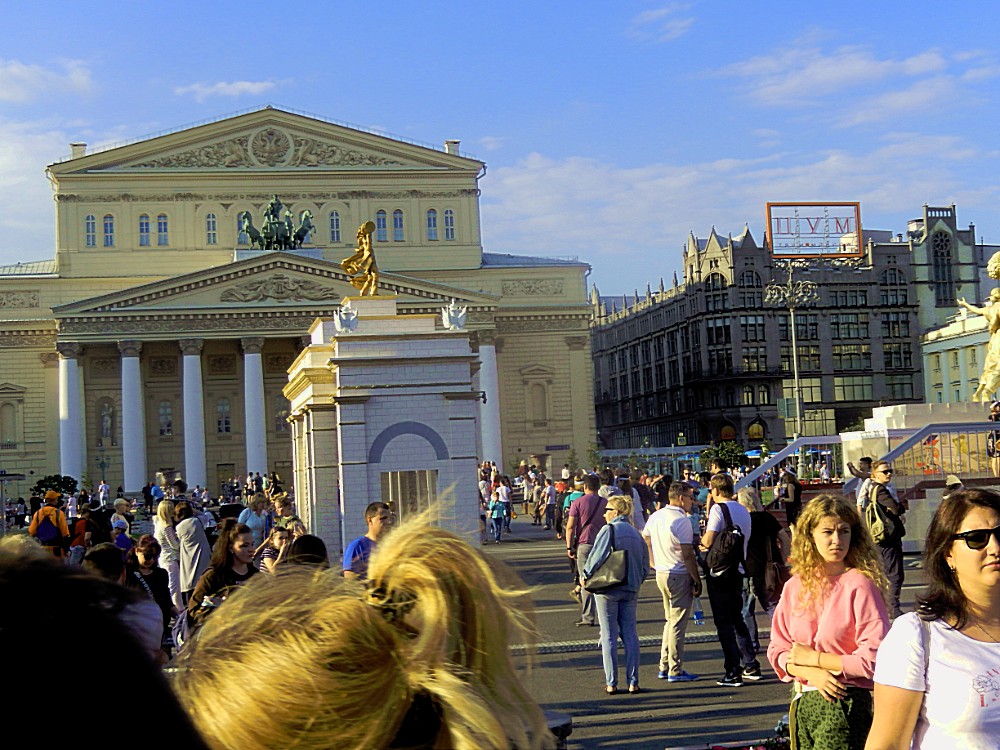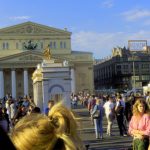City walk through Moscow
After spending some time looking at street artists performing at the Park Zaryad’ye (A) in honor of Moscow Day, The Wandelgek walked on towards Red Square.
Red Square (C)
Red Square is a city square in Moscow, Russia. It separates the Kremlin, the former royal citadel and now the official residence of the President of Russia, from a historic merchant quarter known as Kitai-gorod. Red Square is often considered to be the central square of Moscow since the city’s major streets, which connect to Russia’s major highways, originate in the square.
The buildings surrounding the Square are all significant in some respect. Lenin’s Mausoleum, for example, contains the embalmed body of Vladimir Ilyich Lenin, the founder of the Soviet Union. Nearby to the South is the elaborate brightly domed Kremlin and the palaces and cathedrals of the Saint Basil’s Cathedral.
On the Eastern side of the square is the GUM department store, and next to it the restored Kazan Cathedral. The Northern side is occupied by the State Historical Museum, whose outlines echo those of Kremlin towers. The Iberian Gate and Chapel have been rebuilt to the Northwest.
Flags of the Soviet Republics were flown there until 1987. The actual flagpoles were removed in 1997.
The only sculptured monument on the square is a bronze statue of Kuzma Minin and Dmitry Pozharsky, who helped to clear Moscow from the Polish invaders in 1612, during the Time of Troubles. Nearby is the so‑called Lobnoye Mesto, a circular platform where public ceremonies used to take place. Both the Minin and Pozharskiy statue and the Lobnoye Mesto were once located more centrally in Red Square but were moved to their current locations to facilitate the large military parades of the Soviet era. The square itself is around 330 meters (1,080 feet) long and 70 meters (230 feet) wide.
The river side of Red Square is dominated by the almost candy like church…
Basilov Cathedral (B)
The Cathedral of Vasily the Blessed (Russian: собо́р Васи́лия Блаже́нного, Sobor Vasiliya Blazhennogo)l ook ĺ, commonly known as Saint Basil’s Cathedral, is a church in Red Square in Moscow, Russia and is regarded as a symbol of the country. The building, now a museum, is officially known as the Cathedral of the Intercession of the Most Holy Theotokos on the Moat (Собо́р Покрова́ Пресвято́й Богоро́дицы, что на Рву, Sobor Pokrova Presvyatoy Bogoroditsy, chto na Rvu) or Pokrovsky Cathedral (Покро́вский собо́р). It was built from 1555 to 1561 on orders from Ivan the Terrible and commemorates the capture of Kazan and Astrakhan. It was the city’s tallest building until the completion of the Ivan the Great Bell Tower in 1600.
Walking over red square from the river Moskva towards the State Historic museum, shows the wall and some of the towers and gates of the Kremlin to the left…
Kremlin walls and towers (C)
Near to the wall are the Lenin Mausoleum and the Kremlin Wall Necropolis where the graves or urnes of lots of the famous Soviet heroes and leaders can be found…
Lenin Mausoleum (C)
Lenin’s Mausoleum (formerly Lenin’s & Stalin’s Mausoleum (1953–1961)), also known as Lenin’s Tomb, situated in Red Square in the centre of Moscow, is a mausoleum that currently serves as the resting place of Soviet leader Vladimir Lenin. His preserved body has been on public display there since shortly after his death in 1924, with rare exceptions in wartime. Alexey Shchusev’s diminutive but monumental granite structure incorporates some elements from ancient mausoleums, such as the Step Pyramid, the Tomb of Cyrus the Great and, to some degree, Temple of the Inscriptions.
Lenin died on January 21, 1924. Two days later architect Alexey Shchusev was charged with building a structure suitable for viewing of the body by mourners. A wooden tomb, in Red Square by the Moscow Kremlin Wall, was ready on January 27, and later that day Lenin’s coffin was placed in it. More than 100,000 people visited the tomb in the next six weeks. By August 1924, Shchusev had replaced the tomb with a larger one, and Lenin’s body was transferred to a sarcophagus designed by architect Konstantin Melnikov.
Pathologist Alexei Ivanovich Abrikosov had embalmed Lenin’s body shortly after his death, but by 1929 it was determined that it would be possible to preserve the body for much longer than usual; therefore, the next year a new mausoleum of marble, porphyry, granite, and labradorite (by Alexey Shchusev, I.A. Frantsuz and G.K. Yakovlev) was completed. The mausoleum also served as a viewing stand for Soviet leaders to review parades in Red Square.
In 1973, sculptor Nikolai Tomsky designed a new sarcophagus.
On January 26, 1924, the Head of the Moscow Garrison issued an order to place the guard of honour at the mausoleum. Russians call it the “Number One Sentry”. After the events of the Russian constitutional crisis of 1993, the guard of honor was disbanded. In 1997, the “Number One Sentry” was restored at the Tomb of the Unknown Soldier in Alexander Garden.
Lenin’s body was removed in October 1941 and evacuated to Tyumen, in Siberia, when it appeared that Moscow might be in danger of capture by German troops. After the war, it was returned and the tomb reopened.
More than 10 million people visited Lenin’s tomb between 1924 and 1972.
Joseph Stalin’s embalmed body shared a spot next to Lenin’s, from the time of his death in March 1953 until October 1961, when Stalin was removed as part of de-Stalinization and Khrushchev’s Thaw, and buried in the Kremlin Wall Necropolis outside the walls of the Kremlin.
Lenin’s body was to have been transferred to the Pantheon upon its completion but the project was cancelled in the aftermath of de-Stalinization.
Kremlin Wall Necropolis
The row of individual tombs behind the Mausoleum began to acquire its present shape after the end of World War II. Sergei Merkurov created the first five tombs, for the recently deceased Mikhail Kalinin and Andrey Zhdanov, as well as for Yakov Sverdlov, Mikhail Frunze and Felix Dzerzhinsky who perished decades earlier. Grey granite stands that separate Red Square from the wall were built in the same period. In 1947 Merkurov proposed rebuilding the Mausoleum into a sort of “Pergamon Altar” that would become a foreground to a statue of Stalin placed atop Senatskaya tower. Dmitry Chechulin, Vera Mukhina and others spoke against the proposal and it was soon dropped.
There are, in total, twelve individual tombs; all, including the four burials of the 1980s, are shaped similar to the canonical Merkurov’s model. All twelve are considered to have died of natural causes, although some, such as Frunze, had unusual circumstances associated with their death. Konstantin Chernenko, who died in March 1985, became the last person to be buried on Red Square. Former head of state Andrei Gromyko, who died in July 1989, was offered burial in the Necropolis near his predecessors but was eventually buried at the Novodevichy cemetery at the request of his family.
The Kremlin wall and the stands erected in the 1940s were traditionally separated with a line of blue spruce (Picea pungens), a tree not occurring naturally in Russia. In August–September 2007 the aging trees, with few exceptions, were cut down and replaced with young trees. Federal Protective Service spokesman explained that the previous generation of spruce, planted in the 1970s, was suffering from dryness of urban landscape; 28 old but sound trees were handpicked for replanting inside the Kremlin. New trees were selected from the nurseries of Altai Mountains, Russian Far East and “some foreign countries”. FPS spokesman also mentioned that in Nikita Khrushchev’s period there were plans to plant a fruit garden around the Mausoleum, but the proposal was rejected in fear of fruit flies.
| Table: List of individual tombs on Red Square, 1946–1985 | ||||||||||||||||||||||||||||||||||||||
|---|---|---|---|---|---|---|---|---|---|---|---|---|---|---|---|---|---|---|---|---|---|---|---|---|---|---|---|---|---|---|---|---|---|---|---|---|---|---|
|
On the other side of Red square is a very large department store building of GUM. The exterior is full of light bulbs that are turned on in the evenings. More of t hat in an upcoming blogpost.
Gum (exterior) (D)
GUM (Russian: ГУМ, pronounced [ˈɡum], an abbreviation of Russian: Главный универсальный магазин, tr. Glávnyj Universáľnyj Magazín, literally “Main Universal Store”) is the main department store in many cities of the former Soviet Union, known as State Department Store during the Soviet era (until 1991). Similarly-named stores operated in some Soviet republics and in post-Soviet states.
The most famous GUM is the large store facing Red Square in the Kitai-gorod area – traditionally a centre of trade in Moscow. As of 2019, the building functions as a shopping mall. Before the 1920s the location was known as the Upper Trading Rows.
With the façade extending for 242 m (794 ft) along the eastern side of Red Square, the Upper Trading Rows were built between 1890 and 1893 by Alexander Pomerantsev (responsible for architecture) and Vladimir Shukhov (responsible for engineering). The trapezoidal building features a combination of elements of Russian medieval architecture and a steel framework and glass roof, a similar style to the great 19th-century railway stations of London. William Craft Brumfield described the GUM building as “a tribute both to Shukhov’s design and to the technical proficiency of Russian architecture toward the end of the 19th century”.
At the other end of the Red Square is the…
State Historical Museum
(E)
The State Historical Museum of Russia is a museum of Russian history wedged between Red Square and Manege Square in Moscow. Its exhibitions range from relics of prehistoric tribes that lived on the territory of present-day Russia, through priceless artworks acquired by members of the Romanov dynasty. The total number of objects in the museum’s collection comes to millions.
Next to the museum, to the right when facing it is the…
Kazan Cathedral (F)
Kazan Cathedral Russian: Казанский собор, formally known as the “Cathedral of Our Lady of Kazan“, is a Russian Orthodox church located on the northeast corner of Red Square in Moscow, Russia. The current building is a reconstruction of the original church, which was destroyed at the direction of then General Secretary of the Central Committee of the Communist Party of the Soviet Union, Joseph Stalin, in 1936.
From the Kazan Cathedral The Wandelgek walked into …
Nikolskaya Street (G)
… thus leaving Red Square. Nikolskaya Street is decorated with loads of colurful lights and glimmering materials hanging high above the pedestrian shopping street. The other streets and even Red Square around the Gum Department store are also opulantly decorated
Nikolskaya Street (Russian: Никольская улица) is a pedestrian street in the Kitay-Gorod of Moscow. It connects Red Square and Lubyanka Square. It was known as the Street of the 25th of October between 1935 and 1990.
The north side of the street is lined with historic buildings, such as the Kazan Cathedral, the Old Mint, Monastery of the Holy Saviour, Greek Monastery of St. Nicholas (from which this street takes its name), and the former Holy Synod Printing Offices, Russia’s first publishing house. The south side contains the GUM and the Dormition Church, an example of the Naryshkin Baroque underwritten by the Saltykov boyar family in 1691.
Before Stalin’s reconstruction of downtown Moscow, the street led to the Vladimir Gates of the Kitay-Gorod wall (1534-38) which used to dominate the Lubyanka Square. Another Naryshkin Baroque church, dating from 1694, adjoined the gate, as did the more recent chapel of St. Pantaleon with a large cupola. All these buildings were razed in 1934.
The Nikolskaya Street and the neighbouring Tretyakovsky Proyezd are the center of Moscow’s traditional luxury shopping district. It was pedestrianized in August 2013.
But first almost immediately after entering Nikolskaya Street, The Wandelgek turned right through a hate into the GUM State Department Store…
Gum (interior) (E ) and entrance in (G)
The glass-roofed design made the building unique at the time of construction. The roof, the diameter of which is 14 m (46 ft), looks light, but it is a firm construction made of more than 50,000 metal pods (about 743 t (819 short tons)), capable of supporting snowfall accumulation. Illumination is provided by huge arched skylights of iron and glass, each weighing some 740 t (820 short tons) and containing in excess of 20,000 panes of glass. The facade is divided into several horizontal tiers, lined with red Finnish granite, Tarusa marble, and limestone. Each arcade is on three levels, linked by walkways of reinforced concrete.
The shops and bars of Nikolskaya Street are quite expensive but !! if you divert a bit and leave this street you will find a gate to the left and a little square behind where the terraces have much better prized food and drinks.
Lunch and drinks (G)
The choice of beers is quite good and the glasses are huge.
A bit further down Nikolskaya street on the left is another gate leading into…
Tretyakovsky Proyezd (G)
Tretyakovsky Proyezd or Tretyakov Drive (Russian: Третьяковский проезд) is a short street with boutiques and shops with many luxury goods located in Kitai-gorod in Moscow and known as one of the most expensive shopping areas in the world.
The mediaeval-looking archway onto Theatre Drive was designed by architect Alexander Kaminsky (1829–1897) in 1871. The project was financed by Kaminsky’s brother-in-law, Pavel Mikhailovich Tretyakov, who was also the founder of the Tretyakov Gallery.
The Tretyakovs’ frustration over a blockage on Nikolskaya Street is said to have inspired them to buy the land and revive a Middle Ages thoroughfare from Nikolskaya to the Theatre Drive, across the former Kitai-gorod wall.
At the other end Tretyakovsky Proyezd opens up into…
Teatralnaya Ploschad/Revolution Square (H)
Theatre Square or Teatralnaya Square (Russian: Театральная площадь, Teatralnaya ploshchad), known as Sverdlov Square between 1919 and 1991, is a city square in the Tverskoy District of central Moscow, Russia. It is at the junction of Kuznetsky Bridge Street, Petrovka Street, and Theatre Drive (north-west of the latter; the square south-east of Theatre Drive is the separate Revolution Square).
I liked this statue in gold color celebrating farmers, reflecting the sunlight…
Also on the square is a statue in honor of Karl Marx, who “invented” Socialism and Communism together with Friedrich Engels…
Karl Marx Statue (H)
At the opposite side of the square crossing a large road was the famous…
Bolschoi Theater (I)
The Bolshoi Theatre is a historic theatre in Moscow, Russia, originally designed by architect Joseph Bové, which holds ballet and opera performances. Before the October Revolution it was a part of the Imperial Theatres of the Russian Empire along with Maly Theatre (Small Theatre) in Moscow and a few theatres in Saint Petersburg (Hermitage Theatre, Bolshoi (Kamenny) Theatre, later Mariinsky Theatre and others).
The Bolshoi Ballet and Bolshoi Opera are amongst the oldest and most renowned ballet and opera companies in the world. It is by far the world’s biggest ballet company, with more than 200 dancers. The theatre is the parent company of The Bolshoi Ballet Academy, a world-famous leading school of ballet. It has a branch at the Bolshoi Theater School in Joinville, Brazil.
From here I started walking via Petrovka Ulitsa, Strastnoy Blvd, Tverskoy Blvd toa restaurant where I went for diner. But more of that in my next upcoming blogpost.




